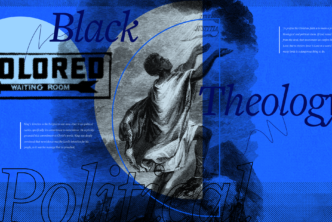Facilitating corporate worship is a big responsibility. Everything you do, every choice you make, is intended to lead your congregation to worship their creator more fully. Some churches play the same songs frequently to make it easier for people to follow along. Others play a wide variety of songs and styles to empower the congregation to see the depth and range of worship.
However you approach worship, it helps to know what your church has done in the past. Whether you want to see the songs you used last week or you want to look at all of last year, Proclaim’s song usage report makes it easy to skim your past sets. The report provides the key information you send to CCLI and other licensing companies, but it also lets you see all your past worship sets at once.
Every time you take a presentation “On Air” in Proclaim, a song history report is automatically created for you to view in Proclaim or your presentation group on Faithlife.com.
Here are five things you can learn from your song history:
You sing that one song way too often
It’s nice to play familiar songs so the congregation can focus on worshiping God instead of stumbling through new lyrics, but playing the same song too frequently can have the opposite effect: people know the songs so well they recite them without even noticing the words.
When you hover over a song in Proclaim’s song usage report, every instance of that song lights up so you can see when you’ve played it before.
A familiar song in the right context can help people feel more comfortable as they enter into worship. But if you use the same set every week, your worship band won’t be the only ones getting tired of it. (I like it too, but maybe it’s time to take a break from “Oceans.”)
You don’t sing enough hymns
Some people have beautiful memories of how hymns have affected them. Some people don’t. When you see a hymn on the screen, there’s something meaningful and rich about knowing that the body of Christ has used these words to praise God for centuries. The stories behind classic hymns are sometimes equally powerful testimonies of faith.
Many hymns also have modern variations to accommodate new sounds and styles. These provide the congregation with a comfortable framework for worship while allowing you the freedom to help them experience those lyrics in new ways.
You certainly don’t have to use hymns to facilitate a meaningful worship experience, but if hymns are important to you, the song usage report can show you how long it’s been since your church sang one together.
Your set is straight out of the 90s
When I was a teenager, I mowed the lawn with headphones on, belting out songs like “Lord I Lift Your Name on High,” and “Lord Reign in Me.” This stopped shortly after the neighbors came over to find out who was shouting over the lawn mower. 90s worship songs are great, and they have their place. Their lyrics can still carry the weight of the cross and the glory of salvation—and they can be nostalgic.
But it’s been two decades. Are you seriously trying to tell your church that no good worship songs have come out since then? You can still pepper them throughout your set or load them into a throwback worship service, but it’s a little much when every song gives people flashbacks.
If you didn’t notice that your songs all sound like the same decade, it might help seeing your sets together in the song usage report. (Tip: Maybe have an intern take a peek at it.)
You’re playing too many new songs
If your congregation didn’t notice that the latest Hillsong United album dropped and they haven’t learned all the words yet, it’s okay—you don’t have to teach them all at once. They can still worship God with old lyrics. Don’t assume that “everyone knows these songs” because they’re popular.
You might not even notice how often you play new songs, or a series of new songs, but it’s important to recognize how it affects your congregation. While the lyrics and the music may be deeply meaningful, every new song creates a temporary disruption for at least some of the members of your church. It’s up to you to decide how often it’s appropriate to stretch them, but checking your song usage report can help you see how often you’re asking people to learn something new.
All your songs are about the same thing
The theology and expressions of our worship can be just as wide-ranging as our sermons. Hopefully, when possible, you connect your worship set to the main themes of your sermon. But even if you don’t, you can help your congregation recognize and praise more than the beauty of the Father’s love, or Jesus’ work on the cross.
It’s like if your pastor only preached through the book of John. There’s a lot of depth there, and it’s absolutely important, but the whole story of the Bible reveals so much more than that one book can on its own.
What’s your song history telling you?
To find your song usage report, use the account menu in the top right corner of Proclaim. (Or, you can also use the “insights” tab in your presentation group on Faithlife.com.)
From there, you can view your song usage report in a browser, or download it into a spreadsheet. Choose “CCLI Usage” to include the CCLI number of each song and the number of times it was used.
What’s your report telling you?
* * *
Don’t have Proclaim? No problem. Try Proclaim free. We’ll even add Pro Media—a rich library of church media tailored specifically for Proclaim.





